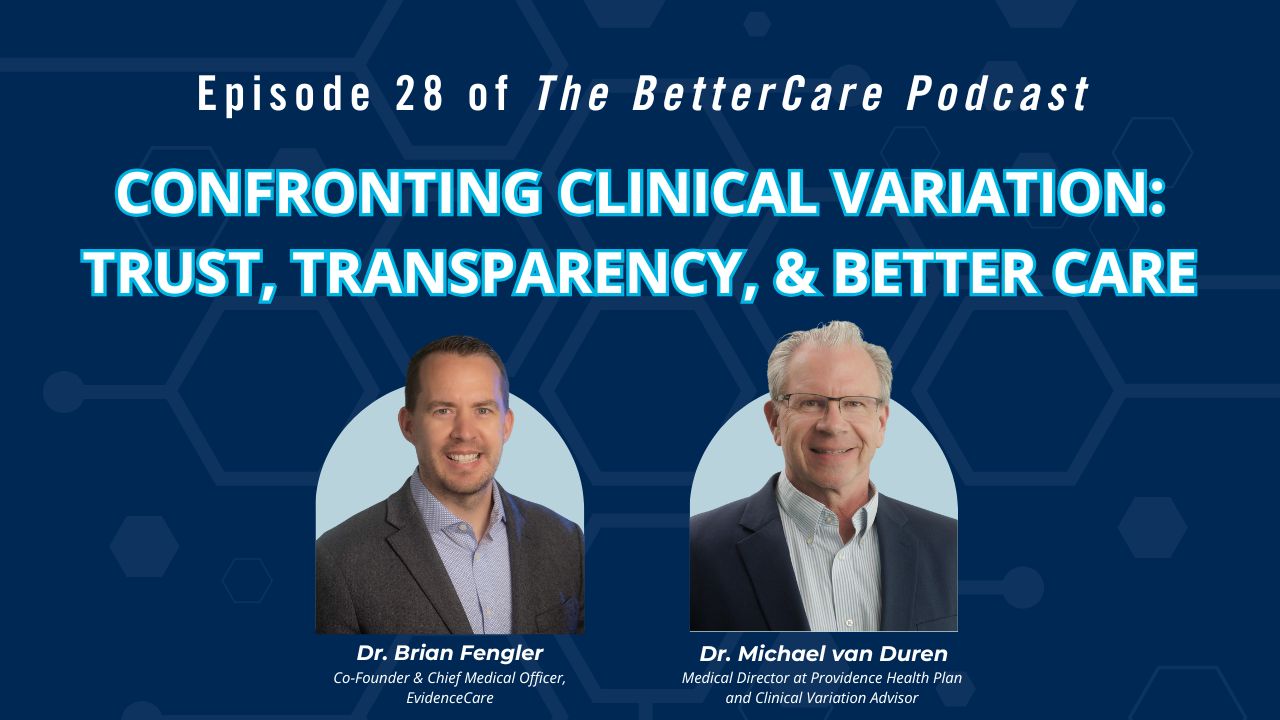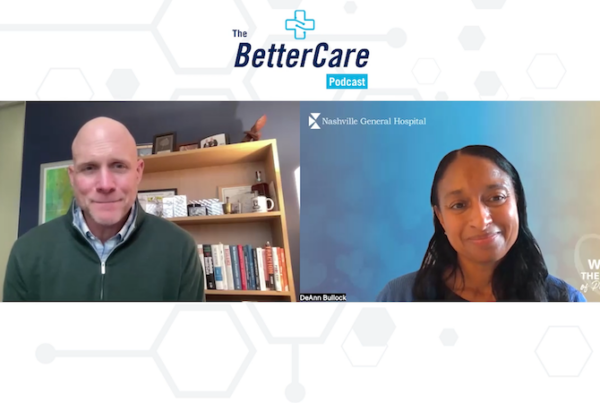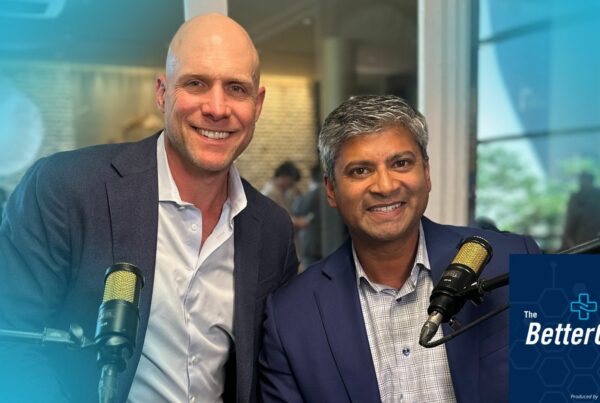Clinical variation remains one of the most under-appreciated drivers of inefficiency and cost in healthcare. Behind every excess test, unnecessary admission, or prolonged length of stay lies a variation in practice—often unintentional, sometimes unavoidable, but frequently addressable.
For health systems striving to improve quality and reduce cost, understanding and acting on clinical variation is not just a data exercise—it’s a cultural transformation.
I’ve had many conversations with clinical leaders around this topic, but in a recent episode of The BetterCare Podcast, I had the chance to go deep with someone who’s been doing this work for decades—Dr. Michael van Duren.
Michael has led variation reduction efforts at large systems like Sutter Health, and in our conversation, he shared a refreshingly honest look at what it takes to make real progress. What follows is a summary of that conversation, along with my reflections and takeaways for health system leaders who want to tackle variation meaningfully.
Some quotes have been lightly edited for clarity and brevity.
Ep 28 – Confronting Clinical Variation – Dr. Michael van Duren
What is care variation and why does it matter?
Care variation refers to differences in how physicians and healthcare teams diagnose, treat, and manage similar patient conditions. While some variation is appropriate—reflecting patient-specific needs—unwarranted variation often signals inefficiencies, outdated practices, or inconsistent application of evidence-based guidelines.
It can lead to unnecessary tests, treatments, admissions, and extended hospital stays, all of which inflate costs and introduce potential harm to patients. Reducing this type of variation is essential not only for improving clinical outcomes and patient experience but also for controlling costs and optimizing resource use in an increasingly value-driven healthcare environment.
Why health systems often fail to address clinical variation
When I asked Michael why so many variation initiatives stall out, his answer was clear: it’s uncomfortable. Highlighting variation means shining a light on physician behavior—something that’s deeply personal and professional.
It’s also hard work. Attribution is messy. Change requires cultural finesse. And often, these initiatives get deprioritized for more visible or “urgent” system projects.
The result? A few pilot programs, some interesting reports… and little lasting change.
Change Begins with Trust
Michael emphasized this point repeatedly: You can’t drive change with numbers alone. You need trust.
Many health systems start with big, aggregated outcome metrics like average LOS or cost per DRG. These may mean something to the C-suite, but to clinicians, they often feel disconnected or even accusatory.
Instead, Michael has seen success using process metrics: tangible behaviors within a physician’s control—like how often certain labs are ordered or the percentage of discharges before 10 a.m.
He also stressed the importance of attribution: “If a report says I ordered more CT scans, but it was really the consulting neurologist, I’ll stop listening. Getting attribution right is critical to engagement.”
When his team introduced software that visualized care episodes—CT scans vs. X-rays for pneumonia, choices in antibiotic prescribing, imaging preferences—the shift was immediate.
“The most powerful thing we did was get doctors in a room and show them their own data. They couldn’t stop talking. It wasn’t about the numbers—it was about the differences.”
The human component of curiosity, competitiveness, and cultural resistance
Exposing variation doesn’t just surface data—it challenges professional identity. That’s why how data is shared matters as much as what is shared.
Michael reminded us that how you present data matters just as much as what you present. While many health systems still default to anonymity, he’s seen real engagement happen with unblinded peer data where names are attached—thoughtfully, not punitively.
“Doctors are competitive. When they see they’re an outlier, it stings. But then they want to understand why and do better.”
Of course, this transparency only works with the right facilitation. Ideally, that means a trusted peer—or even a neutral third party—who can create a safe space. The goal isn’t compliance. It’s conversation. And sometimes, the best move is simply to be quiet.
“The best phrase I learned was to shut my big mouth,” he joked. “Let the group talk.”
How to make variation reduction worth the investment
Variation reduction isn’t just about quality—it’s also about ROI. To achieve real financial and clinical impact, health systems must be intentional about how they measure and present variation.
But you don’t get there without infrastructure. At one health system, Michael helped build a team that included 10 data analysts dedicated to this work. They built metrics that made sense to clinicians and delivered them in ways that drove actual behavior change.
That meant translating high-level outcomes into actionable, trackable process metrics. And it meant refining those metrics over time based on feedback from clinical teams.
“You could spend forever trying to get a metric perfect… But if it’s 90% there, and it drives the right conversation—it’s worth it.”
The type of data used to evaluate improvement plays a pivotal role. Outcome metrics—like cost per DRG or average length of stay are important to finance leaders, but they often lack clarity for clinical teams. To bridge this gap, health systems must translate outcome metrics into actionable process metrics that are properly attributed to the physician responsible at that time of care—discrete behaviors that physicians can control. This includes things like the frequency of ordering specific tests, timing of discharge orders, or how often consults are requested.
These process metrics form the foundation for tracking behavior change and demonstrating return on investment. But capturing and analyzing them requires infrastructure—analysts, data scientists, and an ongoing measurement framework. And to sustain that investment, CFOs need to see results: measurable improvement over time, adjusted for seasonality and secular trends, and translated into real financial outcomes.
Creating a culture of shared ownership and improvement
More than anything, what stood out in our conversation was how much variation work is about leadership that drives cultural change.
Developing meaningful metrics is a balancing act between precision and practicality. Clinicians often encounter variation reports that feel too generic to be useful or too complex to act upon. That’s why co-creating and iterating on metrics with the clinical teams who will use them is essential. This isn’t a one-and-done process—it’s an evolving dialogue.
Senior clinical leaders must champion the effort, setting a tone of inquiry rather than enforcement. Local physician leaders must facilitate discussions with empathy, recognizing the stress and complexity of clinical work. And frontline clinicians must be supported to engage thoughtfully—not just once, but as part of an ongoing habit.
And when that happens, something powerful emerges.
“It reconnects clinicians to their purpose… That was the most common feedback: ‘This was the best part of the meeting.’”
Are you looking for trustworthy care variation data for your physicians?
If you’re ready to take the next step, EvidenceCare offers two powerful tools to help health systems reduce unwarranted care variation, drive down costs, and improve physician engagement:
- CareInsights: A mobile-first analytics platform designed specifically for physicians. CareInsights sends personalized, actionable insights directly to clinicians via text message—no login required. These insights focus on process metrics that physicians can control, like imaging utilization or lab ordering habits, and present comparisons to peers in their specialty and location. Delivered weekly and tailored by clinical leaders, CareInsights turns variation data into a simple, engaging feedback loop that drive meaningful improvement.
- CareGauge: An EHR-integrated clinical decision support tool that gives physicians real-time visibility into utilization and cost metrics—directly within their EHR workflow. With CareGauge, clinicians can see with zero-click transparency metrics on lab, imaging, and medication utilization, as well as length of stay insights. The tool is proven to reduce unnecessary utilization, decrease length of stay, and save an average of $325 in variable costs of care per discharge, all without disrupting clinical workflows.
Both tools are built with clinicians in mind, ensuring the data is credible, intuitive, and tied to actionable change. Whether your goal is physician-driven improvement or frontline decision support, EvidenceCare provides the infrastructure to make variation reduction sustainable and effective.
Schedule a demo to see how CareInsights and CareGauge can power your variation reduction strategy.
To watch or listen to the full episode, check out Episode 28 of The BetterCare Podcast.










